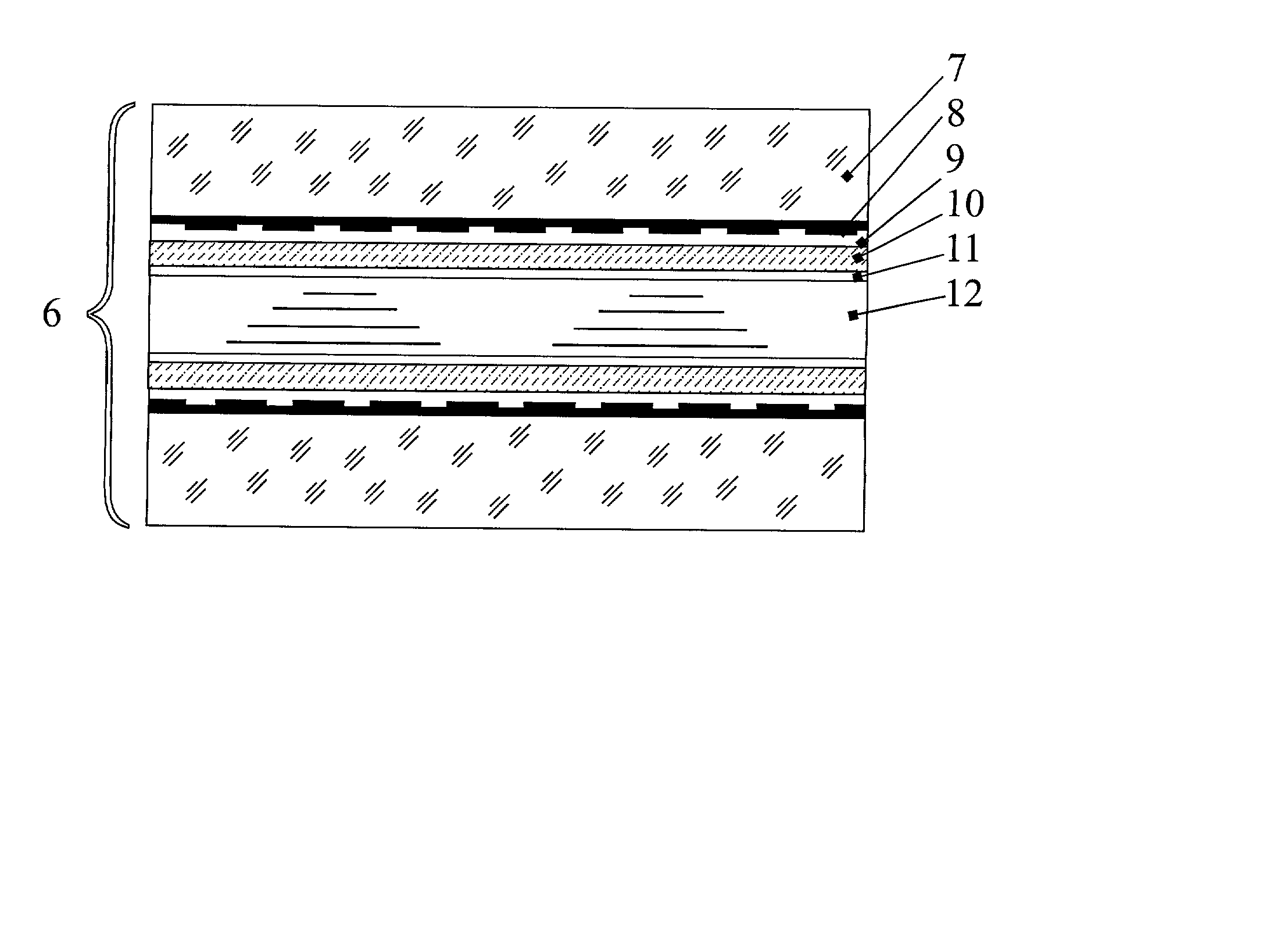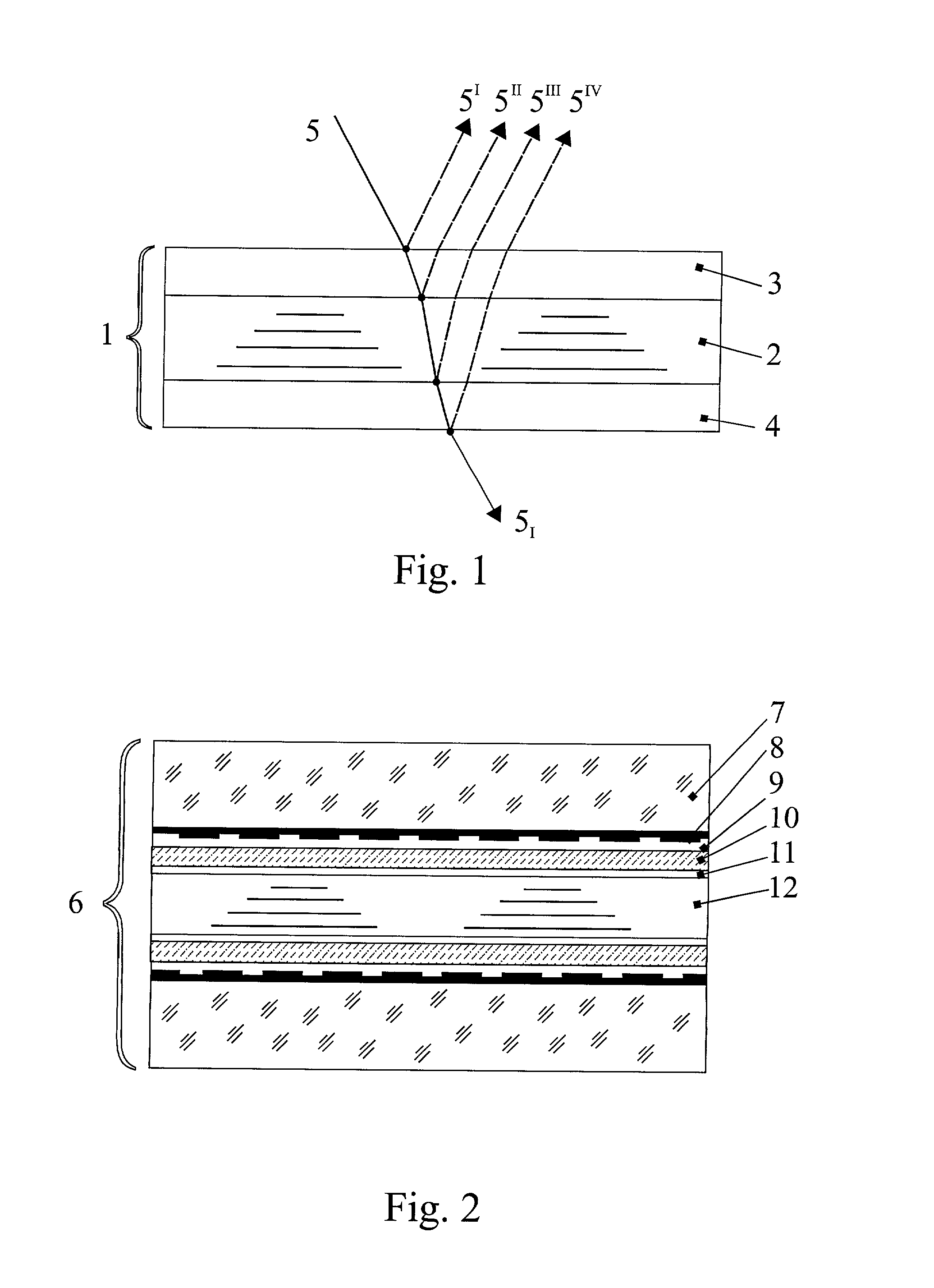Liquid crystal information displays
a technology of information display and liquid crystal, applied in the direction of instruments, chemistry apparatus and processes, thin material processing, etc., can solve the problems of low brightness, low contrast, quite high energy consumption, and substantial light loss due to absorption
- Summary
- Abstract
- Description
- Claims
- Application Information
AI Technical Summary
Benefits of technology
Problems solved by technology
Method used
Image
Examples
Embodiment Construction
[0020] Let us consider, for example, a transmissive liquid crystal display. It consists of two plates, which can be made out of glass, plastic or other transparent material. On the internal surface of these plates facing the layer of nematic liquid crystal, one applies transparent electrodes. Over the transparent electrodes one applies polarizing films of polymer or other material, which smooth out the relief and give the entire surface of the plate uniform properties. Polarizing coatings are applied onto these films with their optical axes oriented mutually perpendicular. The polarizing coatings align the molecules of nematic liquid crystal. The plates and functional layers define panels on each side of the liquid crystal material.
[0021] For the purpose of color compensation in an liquid crystal display with super twist nematic (STN), one additionally introduces an optically anisotropic layer with a predetermined optical thickness situated on the second plate.
[0022] FIG. 2 is a cro...
PUM
| Property | Measurement | Unit |
|---|---|---|
| refractive indices | aaaaa | aaaaa |
| thickness | aaaaa | aaaaa |
| thickness | aaaaa | aaaaa |
Abstract
Description
Claims
Application Information
 Login to View More
Login to View More - R&D
- Intellectual Property
- Life Sciences
- Materials
- Tech Scout
- Unparalleled Data Quality
- Higher Quality Content
- 60% Fewer Hallucinations
Browse by: Latest US Patents, China's latest patents, Technical Efficacy Thesaurus, Application Domain, Technology Topic, Popular Technical Reports.
© 2025 PatSnap. All rights reserved.Legal|Privacy policy|Modern Slavery Act Transparency Statement|Sitemap|About US| Contact US: help@patsnap.com


